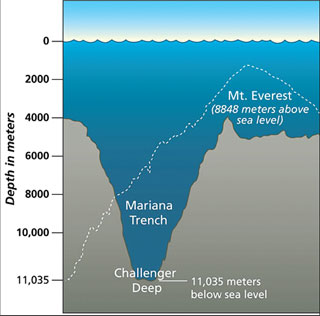|

How dolphins sleep
 Like
any other mammal the dolphins too need to rest but they cannot shut off
their brain completely when they go to sleep. They can never go into a
deep sleep like we humans do because they have to be conscious all the
time to breathe.We too need to breathe even when we go to sleep so why
can't the dolphins sleep the way we do, you may wonder. Well, the reason
is that unlike us, dolphins live in the water and they breathe through a
blow hole. As they cannot stay under water for long and be without
opening the blow hole to take a breath they cannot enjoy a deep sleep . Like
any other mammal the dolphins too need to rest but they cannot shut off
their brain completely when they go to sleep. They can never go into a
deep sleep like we humans do because they have to be conscious all the
time to breathe.We too need to breathe even when we go to sleep so why
can't the dolphins sleep the way we do, you may wonder. Well, the reason
is that unlike us, dolphins live in the water and they breathe through a
blow hole. As they cannot stay under water for long and be without
opening the blow hole to take a breath they cannot enjoy a deep sleep .
Dolphins have "solved" this problem by letting one half of their
brain sleep at a time.
This has been determined by doing EEG studies on dolphins. Dolphins
sleep frequently, throughout the day for about eight hours day .
A dolphin's behaviour when sleeping/resting depends on the
circumstances and possibly on individual preferences. There are three
ways in which they could rest or sleep .
They can either swim slowly and surface every now and then for a
breath, rest at the surface with their blow hole exposed or rest on the
bottom (in shallow water) and rise to the surface every now and then to
breathe.
Why birds chirp at night
 Generally
birds are very noisy when they are flying and searching for food during
the day. The sound of their chirps lets us know they are active.
Sometimes birds chirp at night too and they do so for a variety of
reasons. Generally
birds are very noisy when they are flying and searching for food during
the day. The sound of their chirps lets us know they are active.
Sometimes birds chirp at night too and they do so for a variety of
reasons.
While many birds are daytime birds that need sunlight to see the food
they are hunting and gathering, other birds are nocturnal, or active
only at night. Owls are one such species. They hunt critters that scurry
about in the night time , such as rodents. That is why you hear an owl's
hoot after dark. Other birds such as the whippoor will are famous for
their night time activity. In fact, the whippoorwill can repeat its loud
chirp 400 times without stopping!
Many scientists are of the view that as birds do not need much sleep
they would continue to hunt even in the night if the darkness didn't
limit their ability to see their food. So ,in areas where it is lighter
for more hours a day, or in places where outdoor lighting helps
visibility, the birds may go in for some extra feeding time and we will
hear them chirping.
Some experts think that birds may be chirping more at night because
of the high level of noise during the day time.The loud noises made by
traffic and other daytime activities may have forced them to change
their singing time especially since a bird's mating call may be drowned
for the noise during the day.
How deep the oceans are
An ocean is a body of saline water that composes a large part of a
planet's hydrosphere. The world's oceans in descending order of area are
the Pacific , Atlantic , Indian , Southern (Antarctic), and the Arctic
Oceans. When we look at these five major bodies of water as a whole, it
is referred to as the world ocean.
 This
gigantic body of water has an average depth of 3800 metres. Don't get
fooled though. This number is just the average depth. The depth of the
deepest seas can exceed 11,000 metres. The Pacific Ocean's average depth
is 4,188metres (14,000 ft).The average depth of the Atlantic, with its
adjacent seas, is 3,339 metres (10,955 ft); without them it is 3,926
metres (12,881 ft). The average depth of the Indian Ocean is measured at
3,890 m (12,762 ft).The Southern Ocean has typical depths of between
4,000 and 5,000 meters (13,000 to 16,000 ft) with only limited areas of
shallow water. This
gigantic body of water has an average depth of 3800 metres. Don't get
fooled though. This number is just the average depth. The depth of the
deepest seas can exceed 11,000 metres. The Pacific Ocean's average depth
is 4,188metres (14,000 ft).The average depth of the Atlantic, with its
adjacent seas, is 3,339 metres (10,955 ft); without them it is 3,926
metres (12,881 ft). The average depth of the Indian Ocean is measured at
3,890 m (12,762 ft).The Southern Ocean has typical depths of between
4,000 and 5,000 meters (13,000 to 16,000 ft) with only limited areas of
shallow water.
The Arctic Ocean is the smallest, and shallowest of the world's five
major oceans. It occupies a roughly circular basin and covers an area of
about 14,056,000 km2 (5,427,000 sq mi), almost the size of Russia. The
coastline is estimated to be 45,390 km (28,200 mi). These depth
measurements can be conducted through several different methods. Two of
the most common ones are satellite altimeters and echo sounders.
Satellite measurements use frequent short microwave radiation to measure
sea level with great accuracy. Echo sounders, or sonar, use sound waves
of frequencies from 10 kHz to 30 kHz to travel from the surface of the
ocean to the ocean floor. These sound waves are transmitted slowly. The
velocity of the sound wave and the time it takes for the wave to echo
from the bottom or reach the receiver are the two factors necessary to
determine the depth.
The total volume of the world ocean is approximately 1.3 billion
cubic kilometres (310 million cu mi) with an average depth of 3,682
metres (12,080 ft)[.
It is the habitat of 230,000 known species, however much of the
ocean's depths remain unexplored and it is estimated that over two
million marine species may exist.Do you know what the deepest part of
the entire ocean is? The Challenger Deep which is located beneath the
western Pacific Ocean in the southern end of the Mariana Trench.
It runs several hundred kilometres south west of the U.S. territorial
island of Guam. Challenger Deep is approximately 11,030 metres (36,200
feet) deep. It is named after the HMS Challenger, whose crew first
sounded the depths of the trench in 1875.
Why cats purr
 Many
suggest a cat purrs from contentment and pleasure. Many
suggest a cat purrs from contentment and pleasure.
But a cat also purrs when it is injured and in pain. Some experts in
the field have suggested that the purr, with its low frequency
vibrations, is a "natural healing mechanism." and that purring may be
linked to the strengthening and repairing of bones, relief of pain, and
wound healing. They may also purr when startled or upset.Kittens learn
how to purr when they are a couple of days old and they continue this to
adulthood. Purring is a unique vocal feature in the domestic cat.
However, other species in the Felidae family also purr: Bobcat, Cheetah,
Eurasian Lynx, Puma, and Wild Cat (Complete list in Peters, 2002).
Although some big cats like lions exhibit a purr-like sound, studies
show that the Patherinae subfamily: Lion, Leopard, Jaguar, Tiger, Snow
Leopard, and Clouded Leopard do not exhibit true purring.What makes the
purr distinctive from other cat vocalizations is that it is produced
during the entire respiratory cycle (inhaling and exhaling).
Other vocalizations such as the "meow" are limited to the expiration
of the breath.
Why we blink
How often do you blink? Well, most people blink around 15 times a
minute. Blinking is an involuntary action that protects the eye. The
eye, the most delicate and sensitive part of the body, has to withstand
the dust present in the air and blinking naturally acts as a safeguard
mechanism. Blinking helps in two ways. It lubricates the eyes and keeps
the front portion clear for good vision.

When we blink, a film of tears covers the eyes and washes all the
minute dust particles that may be present. That is the physiological
reason behind blinking but we blink for psychological reasons as well.
For instance, nervousness, loud noises, stress and tension affect the
number of times we blink. You can even try it out yourself. Count the
number of times you blink when you do something wrong. The tension would
probably make you blink more.
But when a person is using all his concentration powers,like while
driving or reading for instance, he will probably blink less. The effort
to concentrate on the task ahead will make him blink a fewer number of
times. Observe people around to see who blinks how many times in what
surroundings. |



